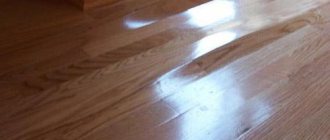A door lock is a complex structure consisting of dozens or even hundreds of tiny elements. They all interact with each other and, as a result, can fail. Lock lubricant will help you get out of an unpleasant situation when the door lock sticks, creaks, or the key gets stuck in it. It is necessary to lubricate door locks periodically: this will help you avoid such problems. The next article will reveal the secrets of how to lubricate the front door lock. You will also learn why silicone lubricant is good for locks.
Why do you need to lubricate the door lock?
Door locks are subject to even more stress than hinges. These are complex mechanisms, so without proper care they will quickly fail. Most often, owners begin to carry out preventive maintenance on locks when any problems appear. For example, the mechanism is lubricated if it begins to jam. Ideally, such work should be carried out regularly.
Locks are lubricated to extend their service life. Lubrication protects the mechanism from:
Door locks are subject to even more stress than hingescorrosion and rust;
- dust;
- rubbing and complete wear.
Corrosion is the enemy of all steel structures. A lock that has been exposed to moisture or steam will not last long. Corrosion is especially dangerous for lock structures in steel doors of private houses.
Dust is another factor that can destroy the mechanism. Once inside, it can block the movement of the crossbars. The lock will begin to open worse.
Lubrication in the lock is needed for sliding. When there is little or no lubrication, the mechanism has difficulty working. The door does not open well, especially in certain weather conditions. In addition, this creates conditions for friction, rubbing and wear of the lock. The parts of the product begin to rub in, and as a result of friction, chips appear, which then clog the mechanism.
The need and frequency of lubrication of entrance door locks
Before describing how to lubricate a metal entrance door, you should describe in more detail the need to perform this type of maintenance on such products. It is obvious that competent and timely implementation of this work leads to the following positive aspects during the operation of a steel structure:
- the sliding of the moving parts of the locking mechanism is improved. As a result, the lock operates easily and without any effort;
- The wear of the device is slowed down and rubbing is eliminated. That is why the question always remains relevant: how to lubricate the front door if it jams;
- dust stops clumping into a dense mass, slowing down and complicating the movement of the locking bolts;
- metal surfaces are not subject to corrosion. For some reason, this reason for the need for timely lubrication is often not mentioned, although it is undoubtedly one of the most important.
An equally important issue is the frequency with which lubrication of entry door locks should be carried out. Most experts consider it quite normal to carry out maintenance of locking mechanisms once a year. This is almost always enough for normal operation of the locks.
However, it must be borne in mind that in some situations it is recommended to carry out the measures in question more often. For example, if you need to lubricate the front door lock from freezing when cold weather sets in.
Another option is to operate the locking mechanism with increased intensity or in an external structure under conditions of constant contact with the external environment. In such situations, the lock must be lubricated at least once every six months or even every 3-4 months.
Causes and consequences
There are four reasons why you have to lubricate the locking mechanism.
One of the common causes of deterioration in the functioning of a door lock is dust that gets inside over time. Gradually, the dust particles gather into a dense lump, which is mixed with iron filings. This significantly worsens the movement of the bolts installed in the locking mechanism.
Most often, this problem is faced by residents of private houses whose front door is located on the street.
Abrasion of parts
Some people think that keyhole problems can only be caused by dust, but this is not true. Often the mechanism begins to malfunction due to poor care. The parts begin to rub against each other, which accelerates the wear of the locking device parts. As a result, a lot of metal shavings appear inside, which begin to rust.
Rust
Another common problem that can cause a lock to work less well is rust. Most often, corrosion appears on a metal surface due to increased humidity levels. If rust is not removed in a timely manner, corroded parts will gradually begin to corrode. This will cause the mechanism to jam.
This problem is common among residents of dachas, private houses and cottages, since their front door lock is located on the street.
Poor sliding of moving parts
There are special parts installed inside the locking mechanism that must move smoothly. Without lubrication, their sliding deteriorates significantly, which leads to the lock jamming.
Having familiarized yourself with the main reasons for the appearance of problems in the operation of the keyhole, you need to understand the frequency of lubrication of parts.
Entrance door
Many people whose front door is located on the street do not know how often to lubricate its lock. Experts recommend carrying out the procedure at least once every two months. This will help prevent dust from entering and wearing out parts installed in the mechanism.
Entrance to the apartment
People living in an apartment believe that it is not necessary to lubricate the keyhole of the front door, since it does not become dirty. However, experts recommend periodically treating the mechanism so that it does not jam due to wear of parts or the ingress of dust particles. Lubrication is not done as often as when caring for a door installed on the street. It is processed once every six months.
For interior
It is easiest to care for interior doors, since their locks are much less likely to wear out and deteriorate due to traces of corrosion appearing on the surface. It is recommended to lubricate such locks once a year. If the keyhole is practically not used, it is processed much less frequently.
Why does the door lock stick?
There are few reasons, but they are all mainly related to the fact that the lock mechanism is not taken care of in a timely manner. If this is done on time, the lock will work without interruption.
- Wear of parts - friction of parts gradually leads to abrasion of parts and because of this, the gaps in the mechanisms increase.
- Dirt entry - the locks are not hermetically sealed and therefore dust, moisture and dirt enter them. This leads to oxidation of the lock, as well as thickening of the lubricant and it begins to impede the operation of the lock.
- The door lock is installed incorrectly or the door is warped.
Input
The front door protects the house from intrusion by uninvited guests and most often its body is made of metal. Causes of unpleasant sound and methods for eliminating problems:
| Problem | Solution |
| Incorrect installation of the device | Carry out dismantling and check the result |
| Blade offset | Checking the condition of the hinges |
| Dirt, debris, and metal corrosion were found in the hinges | Cleaning. Dry with a hairdryer. Lubrication. WD-40 aerosol will help against corrosion |
| The door doesn't close or open well | Remove the structure and check the condition of the hinges. Carry out lubrication procedures. |
If the structure is sagging or the sound is associated with friction, then there will be characteristic marks on the canvas between the opening and the door.
How to lubricate a lock: types of lubricants
Locking mechanisms can be lubricated with the same compounds as door hinges. It is important to choose the right funds. If you choose the wrong composition, you can only ruin the lock. All lubricants can be divided into two main categories:
- special;
- folk
Among folk remedies, such compositions as sunflower oil, graphite, melted fat and grease are well known. Lithol and machine oil can also be partially attributed to folk remedies - these products have long been known among the population.
Special compounds are produced exclusively for lubricating mechanisms. This is, for example, WD40 - a universal lubricant that is also used to lubricate hinges and locks of both entrance and car doors. The composition can be obtained from a spray company, it is more convenient.
Silicone is suitable for some types of mechanisms; this is also a professional product. Litol, despite its popularity among the people, still belongs to the category of professional compositions. It is ideal for lubricating locks in private homes and protecting against freezing. The lithol composition prevents the locking mechanism from freezing even in the most severe cold. Carbon lubricant can be chosen instead of the usual graphite. This compound is a conductive graphite lubricant.
Why do you need lubricant for a lock?
Problems that arise when turning the key can be associated not only with manufacturing deficiencies, violation of the rules for installing door locks or the door itself, but also with insufficient maintenance, so there is no need to rush to disassemble the mechanism or try to break the door. The lock needs lubrication for the simple reason that during operation, the operating elements gradually wear down. The use of a lubricant reduces the friction of working parts, and thereby extends the life of the locking device.
Entrance door
A jammed interior door is a nuisance, but we can solve the problem, there is a wide range of options and time, unless, of course, a frightened child is screaming behind the structure. But what to do if there are problems with the metal product and the reinforced lock of the front door. The question of how to open an iron door using improvised means is quite difficult. First of all, you need to eliminate panic and try all the safe options without financial or health losses.
Each problem has an individual approach. If the key is lost or broken, then how to open the product without a key is a pressing question. The “skillful hands” or “do it yourself” option from scrap materials is almost impossible. Regardless of the complexity of the lock, professional tools are needed. To open a padlock, which is very rarely used for the front door of a residential building, a crowbar and the strength of a burglar or a metal file are enough.
If the lock is internal, you need a screwdriver, hammer, chisel, drill, or everything can be replaced with a set of master keys. First of all, you need to remove the decorative trim around the lock, knock out or drill out the lock cylinder, and only then is it possible to open the door. In any case, you need to be prepared for the fact that as a result of all the measures taken to open the door, replacing the lock is inevitable, and this is the simplest option; it is more difficult if you have to change a door that has been removed from its hinges or knocked out of the door frame.
The key is broken
The key broke in the lock hole. In this situation, you need to remember the main rule - do not push the fragment remaining in the lock deeper. You can always find improvised tools in your pockets, purse, or from your neighbors to carefully remove the debris. A nail file, pliers, a thin file, a jigsaw file, an awl, and, in extreme cases, straighten the ring from a bunch of keys are suitable. The extraction process is delicate and can take a long time. The main thing is to remember not to damage the lock, which can later be opened with a spare key or a copy of the key, urgently made from debris in the nearest workshop.
Lost key
The key is lost, and there is no possibility that neighbors or relatives have a duplicate. The question of how to open a structure without a key is not so easy to solve; it all depends on the type of lock. The better the quality of the lock, the more degrees of protection the locking mechanism has, and without special dexterity, skill, or experience, it cannot be opened. In this case, turning to professionals is inevitable. If the lock is simpler, then there are options to open it, and there are two main ways. The first method is to knock out the lock cylinder with a hammer or improvised tools.
It is enough to hit harder, and if the lock is not reinforced, it will easily break - the cylinder along with the cracker, remove the screw and open the lock - a matter of technique, bent with a knitting needle or wire. The second method is to drill out the secret itself, and as a result the lock will open with any flat object of suitable size. As a result of such simple operations - the lock is broken, the door is open, and in the near future - a trip to the hardware store for a new lock.
Lack of tools
It is impossible to open the product without a key due to the lack of tools or skills, and the front door is non-metallic. The solution in this case is to knock down the door. If the door opens inward, then knocking the door down is faster and easier than fiddling around with master keys or even tools without the slightest idea about the design of the lock. The main thing you need to know in the process of knocking down a door is that the blow needs to be targeted and sharp, near the keyhole.
Selecting lubricant for different locks
In order not to damage the working locking mechanism, you need to find out what is the best way to lubricate the door lock on your front door. It is traditionally believed that machine oil is a good care product, but this opinion is not always correct.
There are two types of closing systems (cylinder and lever) and each of them has its own optimal lubrication option:
- The cylinder has exactly the type of mechanism where it is appropriate to use oil, and some types of constipations made from bronze elements do not require special care at all;
- Lever (safe) locks may become unusable from oil treatment, since the liquid agent, when dried, can cause the mechanism to jam. Dry lubricant (graphite dust) is ideal for maintaining lever lock systems, which can be poured directly onto the parts of the disassembled mechanism or simply into the keyhole.
Choosing the composition
There are many products that will help it slide and also protect the metal surfaces of the lock parts. Among them there are quite a lot of modern compounds, which are presented in a wide range in construction stores. But along with new ones, old lubricants that have proven themselves over years of use also work well.
Today there are 7 compositions for processing metal parts:
- Silicone mixture;
- Graphite grease;
- WD-40;
- Solid oil;
- Litol;
- Machine oil;
- Gun lubricant.
Let's take a closer look at how to lubricate a lock so that it lasts as long as possible. For door locks with a cylinder cylinder, a silicone compound is well suited. It ensures a soft but precise turning of the key in the keyhole. In addition, silicone repels moisture, which is undoubtedly an additional advantage.
Since ancient times, graphite lubricant has proven itself well. This is a dry type of processing, so the product is released in the form of dust. It can be successfully replaced by a simple pencil lead. It is enough to simply shade the surface and it will no longer stick when moving.
There is a universal remedy that is very popular today. WD-40 comes in spray form and does an excellent job of removing dust, rust and any dirt. It quickly eats away corrosion, repels moisture and helps the mechanism rotate. In all respects, UPS-1 successfully competes with it.
Regular solid oil makes it easier to use the lock. This is a calcium lubricant that has effectively protected metal surfaces for decades. Lithol has also proven itself well. It contains lithium, and therefore the lubricant actively resists water.
Machine and gun oils have long proven their effectiveness. The latter is recommended to lubricate the external surfaces of the lock, since its composition easily withstands any temperature. Even extreme ones.
But besides these mixtures, there are temporary substitutes that can eliminate difficulties when opening the lock for a short period. These substances include regular engine oil waste. Some home owners claim that it is in no way inferior to a full-fledged lubricant for a door lock.
If you don’t have anything at hand and the lock is jammed, regular vegetable oil will help out. But it must be considered only as a lifesaver. Just like melted fat. Natural remedies will lubricate surfaces well and eliminate sticking, but with repeated use, the accumulated fat will do a poor job. Because of this, the performance of the system will decrease, and in the future it will lead to jamming.
Not all lubricants are equally suitable for all mechanisms. Before lubricating the bronze cylinder lock of the front door, you need to make sure that the chosen product will not harm it further. For such a mechanism, a silicone mixture is best suited.
Even a combination lock requires regular maintenance. For this purpose, special holes are provided in its body for introducing lubricants. WD-40 and UPS-1 sprays are best suited for them. But they quickly disappear. Therefore, the schedule for using such compounds is becoming more frequent.
Dependence of the choice of lubricant on the type of lock
People consider used machine oil to be a good lubricant.
People consider used machine oil to be a good lubricant. Not only is the spray good for your lock, but according to some women's sites, you can even buy it with a tube for easy spraying.
It is important not only to decide how to lubricate the door lock, but also to consider its type. There are two main types of door locks: cylinder and lever. In our country, lever locks are often called safe locks, and it is better to lubricate them with dry lubricant in the form of graphite dust. Graphite dust can be easily obtained by grinding the lead of a soft pencil. It can be poured into a disassembled lock or into a keyhole. The use of conventional lubricants is not recommended for these locks, since after a certain time the secret part may become jammed with dried liquid.
Cylinder locks do not require lubrication because they contain bronze parts. But the Chinese counterfeits that have become widespread recently, made from low-quality materials, still need processing. The same women's sites recommend using anything: vegetable oil, melted fat, mining - the lock won't last long anyway.
To avoid getting into an awkward situation in which your castle “rebels” and won’t let you into your own home, you should take care of it. This is not only careful use of the key, but also simple prevention by lubricating and removing dust. A well-maintained lock mechanism will last for years.
You need to take care of the lock in the following order:
- First, you need to inject the cleaning agent into the keyhole so that it flows slightly out of the keyhole.
- The cylinder must be wiped with a dry cloth, then the key must be inserted and removed from it without turning it, so as not to disperse dust throughout the cylinder and jam the secret mechanism.
- After removing the key, the cylinder is wiped again and all this is repeated until the key removed from the cylinder remains clean.
- Only after cleaning the lock from dust and dirt can you inject a few drops of lubricating oil into the well and turn the key.
Lubrication work
Let's look at how to lubricate a lock using the example of a metal entrance door equipped with a cylindrical cylinder. The keyhole must be cleaned before surgery. For this, a special liquid is purchased in advance. It needs to be poured into the key slot. It is better not to spare money so that it pours out from the excess, taking with it all the garbage that has accumulated inside.
When carrying out this procedure, it is necessary to protect the surface of the door leaf, as well as all objects located nearby. To get rid of all blockages, the key is inserted and pulled out several times into the well. Specks moistened with the cleaning liquid will begin to stick to it, like a magnet. The key must be thoroughly wiped each time.
After this, lubricant is poured or injected into the well. If not a spray is used, but just a liquid, then for convenience it is first placed in a syringe. You also need to lubricate generously, not forgetting to wipe off any excess that has come out. Otherwise they will stain the canvas.
Next, the key is also used. It is again placed in the slot and turned in all directions. This will distribute the lubricant throughout the entire mechanism. The procedure is performed several times. After which the key is removed and wiped dry.
To process the lever lock, you will have to remove it from the door and disassemble the secret. For lubrication, you must use graphic powder, dusting all the plates with it. Before installing it back, be sure to check how easily the key turns.
All described measures relate to preventive work. They need to be performed periodically and then you can forever avoid force majeure in the form of a jammed lock. But if this does happen, and you don’t have confidence in your abilities, then it’s better to turn to specialists. They will remove the key, leaving both the lock and the door intact and fully operational.
Choosing a lubricant for a car door lock
Currently, homeowners are offered many different materials that can be used to lubricate a door lock. Moreover, in this situation we are talking about both specially produced compounds and numerous means used by domestic craftsmen and inventors.
The most effective options include silicone lubricant. It is perfect for various locks, especially successfully used for cylinder-type locking devices. An important advantage of the material is its durability at a very reasonable cost.
As a lubricant for the locks of metal doors for the winter, not only a silicone compound is often used, but also ordinary waste, which is used machine oil. This option is budget-friendly and is often used by owners of their own vehicles. Its advantages are obvious - the simplicity and accessibility of the material, which is essentially free.
Often, two more substances that are well known to car enthusiasts are used to lubricate locking devices. In this case we are talking about solid oil and lithol. They have been successfully used for such purposes for quite a long time, and they can be purchased at almost any auto parts or household goods store.
Among the available means that are used extremely widely in domestic conditions, sunflower oil, melted fat and graphite dust should be highlighted. All three options can hardly be called particularly effective, however, they may well bring some benefit in a short time. The exception is graphite, which is obtained by grinding the lead of an ordinary pencil. It is an excellent option for dry lubricant for lever-type locks.
Often, the well-known anti-corrosion treatment WD40 is used to lubricate locking devices. This composition is recommended for use on old locks, as it effectively prevents the reappearance of rust. As a result, the service life of the product is significantly increased.
It is enough to lubricate the lock on the apartment door once a year, and on the entrance door - at least every three months
Lubricant selection - 8 proven formulations
No matter how strange it may sound, buying a good lubricant for locks and hinges with the current choice of models is problematic, especially if a person is far from this topic. Not counting folk remedies, there are 8 types of lubricant for door locks on the market.
Liquid oil that can be found at any hardware store. Professionals call it a spindle. Sold in plastic vials equipped with a pipette, the price is quite reasonable.
Important! The spindle has a couple of unpleasant features - it attracts dust and is washed off with water, so it is not advisable to lubricate the locks on the gates with it.
Silicone lubricant for door locks is now considered the queen of such compounds. This is the best lubricant for entrance door locks for the winter; it is not afraid of moisture, frost and dust.
Graphite dust is widely used to lubricate lever locks and some deadbolt-type locks.
Advice! If you couldn’t buy graphite lubricant at your local store, you can make it yourself by simply rubbing the core of a simple pencil with sandpaper.
Selecting lubricant for different locks
Before lubricating the lock of the metal entrance door, you need to figure out what mechanism you have. At first glance, it may seem to an inexperienced person that there are a huge number of locks, but this is not entirely true.
There are really a lot of models, while there are no more than a dozen types of mechanisms, and if we talk about popular systems, then there are about five of them. Details about choosing a lock for the front door are described and shown in the video “HERE” .
- In cylinder locks, the weak point is the security cylinder. The mechanism consists of many small parts, and most importantly, the cylinder heads cannot be disassembled, so liquid compounds are used for lubrication. Ideally, it is better to take silicone or weapons-grade lubricants. You can use a spindle on driveway and interior doors.
- Most lever locks are lubricated with graphite dust or its liquid equivalent. Deadbolt locks in apartments and private houses are usually lubricated with machine oil, and for large mechanisms installed on garages and gates, litol or grease is better suited.
- Padlocks belong to the budget line, so they are traditionally lubricated with a spindle, although silicone grease is still better.
Each type of lock has its own lubricant, with WD-40, gun oil and silicone grease considered universal.
What not to lubricate locks
There are now a lot of home-grown craftsmen on the Internet who advise people absolute nonsense, for example, often when asked how to lubricate the cylinder of the front door lock, these masters without a twinge of conscience recommend pouring sunflower or olive oil into it.
Household vegetable oils strongly attract dust, so after such an injection the lock will work for a maximum of six months, and then it will begin to act up and eventually jam.
The same can be said about animal fats; lard, rendered fat and other similar things cannot be used to lubricate locks. Among other things, animal fats also set quickly in the cold, so in winter this lubricant can act like glue, with all the ensuing consequences.
But the highest aerobatics of irresponsibility, and simply stupidity, would be the use of waste machine oil to lubricate the locks of the front door. The processing involves a huge amount of fine metal dust and other things harmful to mechanics. The answer lies in the name - this oil has already used up, there is only dirt left and people are trying to pour this dirt into their castle.
Lock lubrication rules
How to properly and how often should you lubricate a door lock? The frequency of processing depends on how intensively the mechanism is used. For example, it is enough to lubricate the lock on an apartment door once a year, and on the entrance door - at least every three months.
The lubrication process is very simple and consists of several steps:
- Clean the working part of the lock from dirt (inject detergent);
- Wipe the lock with a dry cloth and turn the key in the lock several times;
- Pour in a few drops of oil or silicone lubricant or add a little graphite dust (it is convenient to use lubricant bottles equipped with a sprayer).
How to properly lubricate the locking device?
When answering the question of how to lubricate a door lock or any other locking device, one should not forget about how to apply lubricant correctly. Experts advise that in an ideal situation, apply lubricating fluid to a clean mechanism. But in most cases this is quite difficult to do, because, unfortunately, people think about the need to lubricate the lock only when it stops opening.
In general, lubrication with a specialized liquid such as WD-40 or TURSCHLOS PFLIGE can help open the lock, even if the mechanism is very dirty, so there is a reason to first use lubricant, and only then engage in further prevention. Having answered for yourself the question of how to lubricate the lock, you should ask yourself another question, how to do it correctly. The lock is lubricated with a specialized fluid as follows.
- You need to take a can of lubricant and remove the protective cap.
- Remove the small tube from the can and attach it to the opening of the sprayer.
- You need to insert the tube into the keyhole and spray several times. If the liquid flows out, then there is enough product.
- Now insert the key into the lock and remove it. There should be some grease left on the key, wipe it dry with a cloth. We wait a little, then reinsert the key and wipe it. We repeat the action until we manage to pull out a clean key.
- Insert the spray tube into the keyhole again and spray once.
- Now you can turn the key in the lock. We make sure that the lock works well, wipe off any grease stains from the doors and rejoice!
How to lubricate a door lock? Many people are ready to answer this question right away, but only a few answer correctly. If you need to lubricate your locking device, do not rush to fill it with used machine oil. First, get yourself a decent lubricant, use it correctly, and the “grateful castle” will repay you with many years of exemplary service.
The lock is an important part of the door hardware. Due to frequent use and high loads, the device requires maintenance for smooth operation - the use of lubricant.
Door locks need to be lubricated regularly, because they are responsible for the safety of the house and its inhabitants. Most often, treatment is carried out only when problems are noticed in the operation of the mechanism. It is recommended to lubricate the constipation at least once a year to prevent it from becoming stuck.
If we are talking about interior doors in an apartment, which are used more often, then the procedure must be carried out once every 6-8 months. For those who live in private houses, it is good to carry out the treatment once every 3-4 months.
When coating the latch with oil, lubricate the door hinges well. The fittings need treatment both if they are used frequently and if they have not been used for several years.
Why do this?
If you periodically lubricate the lock, it will be easier to turn the key. Irregular lubrication will allow dust to accumulate in the mechanism, making it difficult to use.
The most dangerous thing for any constipation is rust. Because of it, structural elements are gradually destroyed. Over time, it becomes impossible to turn the key.
The properties of lubricants make it possible to protect constipations from dust, dirt and rust, and prevent mechanism breakdown and rapid wear.
Features of lever locks
Reliable steel doors always have lever-type locks. Such mechanisms are also popularly called safe mechanisms. Leveling mechanisms are characterized by increased strength. These structures are best treated with dry lubricant; graphite is ideal for preventing.
To lubricate the lock, you must first turn the key completely in the hole so that its mechanism comes out. It is on the “secret” that graphite shavings or dust are applied.
Graphite is also additionally blown into the keyhole. Experts do not recommend using other types of lubricants for such mechanisms. Various fluid substances can cause the mechanism to malfunction.
How are cylinder locks lubricated?
Cylinder locks are mechanisms with a cylinder that also require preventive maintenance
Cylinder locks are mechanisms with a cylinder that also require preventive maintenance. It is not recommended to pour lubricants into such lock structures. It is better to treat only the bolt itself using simple machine oil or WD40 lubricant.
If you pour oil inside the mechanism, then very soon dust will begin to accumulate in the cylinder, which will clog the lock. The door will no longer open normally, and this will lead to further damage. Cylinder locks sometimes jam and can become corroded. As a last resort, if you need to check the mechanism, it is better to remove the cylinder and inspect it. In case of serious damage, the lock cylinder is replaced with a new one.
Do I need to lubricate the combination lock?
Like any other locking mechanisms, combination locks are also lubricated. However, it is impossible to give unambiguous recommendations on the choice of product here. Typically, the recommended compositions are indicated in the instructions for the lock. In each specific case, this may be some kind of specialized tool. One thing is certain - it is better not to pour folk compounds into such mechanisms.
Combination locks usually have special holes designed for the introduction of lubricants. The type of lubricant depends not only on the specific lock model, but also on the operating conditions. For example, when installing the mechanism on external doors, frost protection may be required. If the lock is installed on the internal door of an office or safe, then such compounds will not be required.
Lubricants that are developed for combination locks not only penetrate deeply into the mechanism and prevent friction and corrosion. They also additionally clean the lock from dust and dirt that inevitably gets inside.
Precautionary measures
The mechanisms of many modern locks rarely require lubrication. And if the door lock still needs maintenance, only special compounds are used for this, since incorrectly selected products can damage the mechanism over time. In any case, everything that is needed to care for the lock should be indicated in the instructions for it.
The lock does not always need lubrication. For example, if the lock works smoothly when the door is open, but when you slam it, the key turns hard, then the problem may not be in the lock, but in the door. Most likely, it sagged or bent. Incorrect operation of the lock is often not due to lack of lubrication! Sometimes the wear of the mechanism simply reaches a critical point. Lubrication of friction surfaces gives positive results only where it is needed.
What else to lubricate the lock with?
In pursuit of soft lock operation, Russians like to use lubricants. This habit comes from the Soviet era: rubbing parts made of low-quality raw materials with huge gaps between each other needed to be lubricated for smooth operation. If you don't lubricate it, it won't work as it should.
Since then we have been pouring either “anti-freeze” into the garage lock, or sunflower oil into all other mechanisms. Remember, lubricant for modern door locks is harmful.
Dirt from the key, atmospheric dust and worn-out metal of the key will then stick to it. A thick substance is formed - coke, which will stick to the elements of the lock and will interfere with its correct operation. For most modern locks, it is critical for grains of sand larger than 0.2 millimeters to get inside.
Comrades, remember, in order for the lock to work well (regardless of where it is installed) it needs to create ideal conditions
All modern locks leave the factories clean inside. The presence of lubricant in the secrecy mechanism today is a sign of hackwork and low quality.
Why do we strive to lubricate our people? Usually, in this way he tries to restore the correct operation of the lock. And locks often begin to “stick” and “bite” for a million reasons that have nothing to do with lubrication.
An even bigger mistake than sunflower oil in a door lock is the use of “anti-freeze” or “brake protection” on garage locks. This is supposedly necessary to prevent the locks from freezing in winter.
The problem is that these liquids are hygroscopic, that is, they subsequently attract moisture to the parts from the air, as a result of which the lock mechanism, even if it has special treatment, quickly begins to corrode and become unusable.
Comrades, remember, in order for the lock to work well (regardless of where it is installed), it needs to create ideal conditions. That is: absence of dirt, grease, frost, condensation and ice. All other measures taken will only make life more difficult.
The most common causes of lock failure
Products with manufacturing defects more often need to be repaired. But even the best quality locking mechanisms wear out over time and become capricious - the movement of the key or bolts becomes difficult. Products made of mild steel or aluminum reach the end of their service life most quickly.
The occurrence of problems is affected by skew, incorrect location of holes, and incorrect fastening of the plate. After such installation, a slight jamming appears, followed by breakage.
In new buildings, mechanisms often become blocked due to the natural shrinkage of the building. The subsidence of the house affects the geometry of the doorway, and therefore the position of the lock parts. Accumulated dust or debris that accidentally gets into the well also leads to malfunctions.
The reasons largely determine whether the locks need repair and how difficult it is to return the devices to working condition. In some cases, only cleaning and replacement of a non-essential part is required. In others, the degree of wear or abrasion of the part is so high that it cannot be restored and it is easier to immediately change the entire mechanism.
Rules for caring for door locks
It is easier to follow the basic rules for operating door lock systems than to periodically replace them. Basic principles of prevention:
- There is no need to use excessive force when installing the product, or sharply insert and turn the key in the keyhole;
- You cannot insert keys from the inside and outside of the door at the same time;
- Do not use a damaged key or foreign objects to open;
- It is required to regularly lubricate the operating mechanism, provided that you know exactly what can be used to lubricate a door lock of this type;
- Clean the lock structure from dirt.
Troubleshooting methods for various problems
The method of eliminating the breakdown directly depends on the cause of the keyhole breakdown, so it is necessary to consider several options.
Lock clogged
First of all, the keyhole is thoroughly washed with kerosene, vegetable or machine oil. After pouring the liquid, a key is inserted into the hole each time, after which it is removed and wiped with a clean rag. Each time you insert the key, you should try to push it as deep as possible in order to thoroughly rinse the clog. At the same time, the key is turned all the way. Such manipulations are carried out about 2-3 times.
Chunk in the castle
Such a nuisance arises in cases where an intruder tries to get into the apartment and if he is scared off, he can deliberately break the master key in the lock to hide the traces of his crime. However, sometimes the keys in the lock also break for the owners themselves. This type of problem can be easily fixed. If there is someone at home, you just need to push a piece of metal out from the inside with a key. But if there is no one at home, then it is better not to try to remove the part from the lock from the outside yourself. In this case, it is recommended to call a repair specialist.
Difficulty turning the key in the keyhole
Poor key turning can be due to two reasons:
- If it turns poorly when opening and closing the door, then it is necessary to clean the mechanism from clogging;
- If poor turning occurs only when the door is closed, then this directly indicates deformation of the frame or the door leaf itself. If the door is wooden, then the problem can be solved by scraping off the wood material from the side of the lock, but if the door is metal, then it must be replaced with a new one, because this problem cannot be corrected.
Latch stuck
If the front door lock does not open, the problem may be directly related to a jammed latch. This can be solved using a metal blade or ruler, but in the absence of these, a plastic card will do.
You need to try to pull the door well away from the jamb and insert an ax, chisel or something similar between the frame and the door leaf. This is done in order to facilitate access to the tongue. Now you need to take a plastic card or a metal ruler (whatever you managed to get) and press on the tongue, trying to push it inside the lock, after which the door leaf will swing open. After the door has been opened, it is still necessary to figure out the reason for the failure of the lock, and it may consist in a breakdown of the spring mechanism or in its weakening.
Malfunction of the cylinder lock
There are several possible problems:
- Poor lock rotation;
- It is impossible to pull the key out of the hole;
- A creaking noise is heard when turning the key.
If the key is stuck in the keyhole, it is unlikely to remove it without the help of a professional. But you can try the following:
How else to care for door locks
Door locks require regular maintenance.
To avoid problems with the mechanism in the future, you need to follow a number of rules. You should not wait until the lock completely jams or until some other problems appear. The best way to protect a lock is prevention. It is recommended to lubricate the doors approximately every six months. If the owner carries out such work less than once a year, then he exposes the mechanism to the risk of wear and premature failure.
You should always use suitable lubricants, and not use products recommended by neighbors or friends. Friends may have different locks and operating conditions for the mechanisms.
Locks on the external doors of private houses require even more careful maintenance. It is advisable to lubricate it approximately once every three to four months. This will avoid problems with mechanisms. External locks are subject to severe stress.
If you take care of your locks, you can extend their service life several times. Today, in addition to lubricants, you can also find in stores various cleaners and even compounds that defrost ice-covered lock structures.
Sources:
- https://www.mnkk.ru/info/kak_pravilno_smazat_zamok_na_stalnoy_dveri/
- https://krutostroi.com/118-chem-smazat-dvernoy-zamok.html
- https://locksdoor.ru/kak-i-chem-smazat-dvernoj-zamok/
- https://dvermet-msk.ru/stati/chem-smazat-zamok-vhodnoj-dveri
- https://staldoor.livejournal.com/98316.html
- https://www.06274.com.ua/list/5132
How to lubricate a door lock
The cleaning and lubrication procedure is quite simple: first of all, a cleaning agent is generously introduced into the lock cylinder, the key is inserted into the lock and immediately removed. It must be wiped and the procedure repeated again. This must be done until the surface of the key is clean. After this, the same algorithm is used to lubricate the mechanism. It is necessary to open and close the lock several times so that the composition has the opportunity to spread and distribute evenly.
How to lubricate a lever lock
For this type of mechanism, it is not recommended to use ordinary lubricants, because the lock may jam when the material dries. In this case, graphite dust is best suited as a lubricant. This material can be obtained by grinding the rod of a simple pencil, but is it worth the effort when good graphite lubricant is sold in aerosol form in every specialized store. It reduces surface friction, protects it from dust and prevents corrosion. Silicone spray is also very effective for lubricating these locks: it provides smooth gliding and protection against corrosion due to its ability to retain moisture (preferably sprayed with a straw).
How to lubricate a cylinder lock
In cylinder locks, only the bolt needs to be lubricated; WD40 is usually used for this, although it evaporates quickly and therefore requires periodic updating. This composition has high water-repellent properties and reliably protects against corrosion. Silicone spray is also suitable for lubricating cylinder lock cylinders.
How to lubricate a combination lock
Locks with a code mechanism have holes for introducing lubricant. Typically, lubricants act very deep inside the mechanism, while at the same time protecting it from contamination and corrosion. Penetrating aerosols WD-40, UPS-1 and the like are recommended as lubricants.
What else is used to lubricate a door lock?
The best way to avoid costly repairs to the lock, or even the entire door structure, is timely preventative maintenance. Moreover, it is not at all difficult to extend its service.
To extend the life of the front door, it is important to monitor the condition of the fittings and, first of all, this concerns the locking mechanism; to ensure its smooth operation, it is necessary to regularly lubricate the lock. At first glance, this is a simple procedure, but it has a number of important nuances; if you do not follow these recommendations, you may have to completely change the lock over time due to its breakdown.
Every door lock needs lubrication from time to time.










